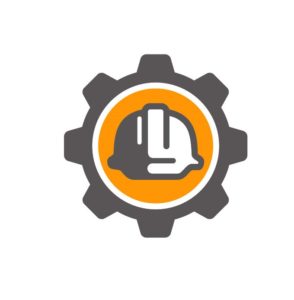You certified?
When asked, most will reach for their stack of certification cards showing a collection of courses completed. Some are valid, others have expired but are kept in hopes they will garner enough credit that you’ll be allowed to work with a promise to renew asap. The collection only shows the variation of topics that the individual has attended and sat through to completion. Not competence.
Many have attended “courses” to simply meet site requirements, regardless if they will ever use the information presented. They’ve been voluntold to appear and will oblige but won’t be overly interested as they see no relevance to what they do.
One size fits all.
Site Orientations. You arrive, sign in, grab a coffee and find a seat. The company representative hands you a quiz sheet and asks that you not fill it out before the slide pertaining to the question is covered. “Don’t worry, we’ll do it together, all of you will pass.”
An hour and a half later, you’ve passed and are allowed on the project. This is repeated at site orientations daily, with the outcome being a card or hard hat sticker for the participant and a signed “quiz” sheet proving diligence for the prime.
If, two days later, you were asked about particular items contained in the orientation, would you remember them?
This exercise is not training as such, but a site awareness meeting held for the collection of names who have listened on a particular date. Nothing more! This isn’t training.
Corrective actions
Something has happened at site, an incident that requires corrective actions, so let’s apply training. Quick and easy, back to work!
The problem with simply throwing “training” at the problem is that it’s often dealing with the fallout rather than the issue.
Years ago, I was at a gas plant fire that started under the floor grating when leaking condensate saturated an area and when the temperature near the area reached a certain point, it ignited. Every extinguisher available was used but the compressor was lost. The incident report had a corrective action for “Extinguisher retraining”?
If all the employees had completed the course the morning of the fire it wouldn’t have made a difference. A review of inspections and maintenance would probably been more beneficial. My point is that training shouldn’t be used as a default item for corrective actions.
$29.95
There it is, the training course I’ve been looking for. “How to fight an electrical fire with a 10# ABC extinguisher on a Telecom Tower”. And only $29.95, yes!
I wonder how many people are interested in this. It drives me crazy when I look at the amount of “training” that’s available for every situation imaginable. (Are there extinguishers mounted on the top of telecom towers?)
I’m the first one to agree that training is very important, I just have a hard time seeing value in subjecting adults to training that in all reality will never be used. Having a basic understanding of situations, concepts and procedures to deal with them is far more value in my mind.
If you’re going to provide training, at least look at the objectives for doing so before sending out the email announcement. Is it for compliance such as H2S on sour gas sites, mandatory for client site access, to meet company policy,… What do we want them to know when they’re done?
While mandatory courses are available for training industry wide needs, (H2S Alive, First Aid AED, Confined Space, etc), these are required courses that students take to satisfy legal responsibilities and are very useful. The courses/training that I have a hard time accepting as beneficial are the ones that you could pass the exam before watching the video, “Can you drag and drop the correct extinguisher for this electrical fire?”, pail of water, fire blanket or ABC rated 20# extinguisher are your choices.
Context
As a safety advisor, your tasked with arranging training for your company to meet regulations. Need training, no problem, there’s plenty available. The problem arises when you can’t find training that is focused on your niche. You have to decide if you want the guys/gals to actually gain from the training or simply have them attend for the sake of the company meeting OH&S obligations.
I arranged a fall arrest re-certification session a few years ago that was a complete waste of time for the participants but got the certificates for the company’s benefit. I had made a note to the provider that the attendees lived in fall arrest equipment and would be a challenging bunch to say the least if the instructor wasn’t very experienced.
The day arrived and within 5 minutes of starting, the guys had tuned out. The instructor had introduced himself and explained how he watched crews similar to theirs several times and was amazed at how high they worked on transmission towers, all while unpacking a newly purchased “Fall harness” from Home Depot. After admitting that he had limited experience with working at height, he proceeded to explain the components of a good system.
I would have been further ahead to have taken the time to seek out a contract instructor that was familiar with our trade and could offer advice that was relevant to the guy’s day to day activities/situations. Live and Learn!
What you gonna do?
Here are three suggestions for criteria that you may want to consider regarding training.
Keep it specific to increase the employee’s benefit. Your company will benefit indirectly through increased performance.
Make it relevant to your employees. Other than general training that is useful in numerous situations (think First Aid), make sure it’s something that employees can see a relationship between what their duties are and what the benefits will be. Don’t train on telecom tower firefighting when you need extinguisher training for a warehouse setting.
Ask your crew what training they would find useful. As adults, we retain more information if it’s on a subject that we choose, not one where we’re told that we need it. Employees will suggest training that is relevant and useful in their jobs over that which is nice to know, but irrelevant, every time. Just ask them.



0 Comments